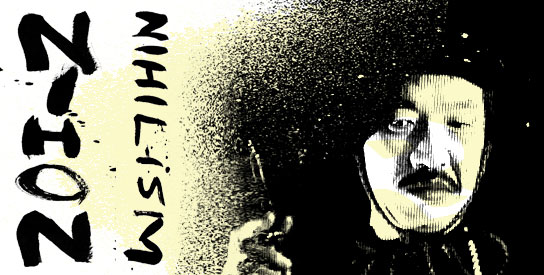
Kôji Wakamatsu is a familiar name for those that enjoy the darker and sleazier side of Japanese cinema. With an endless supply of popular pinku films – with awesomely exploitative titles like The Embryo Hunts in Secret (1966), Violated Angels (1967) and Ecstasy of the Angels (1972) – to his name, delving into Wakamatsu’s filmography is a challenge. And I have to confess, I’m only just getting started. According to Jasper Sharp’s excellent book Behind the Pink Curtain: The Complete History of Japanese Sex Cinema, Wakamatsu’s films became especially grim in the 1970s with an even heavier focus on rape and abuse. So what better place to start than a film with an international title liable to turn heads? Yes, Wakamatsu’s Serial Rapist. Before I jump into the review, I want to quickly mention the terrifying score of Serial Rapist. The score – which I’ll discuss a bit later – is punctuated by one particularly brilliant scene of diagetic sound in which the film’s central character watches a man (the legendary Kaoru Abe and also the film’s composer) play a saxophone by the bay. To place yourself in the bleak universe of Serial Rapist, I suggest listening to the audio of the aforementioned scene while you read the review:
JÛSAN-NIN RENZOKU BÔKÔMA
aka SERIAL RAPIST
1978, Kôji Wakamatsu
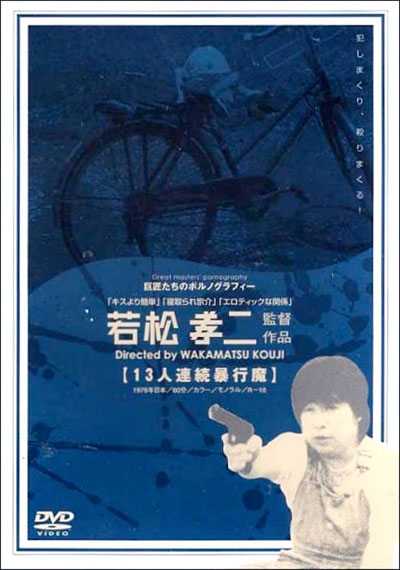
Serial Rapist is sparse in its production, and its script is no exception. The literal translation of its Japanese title is “The Violent Man Who Attacked 13 People” – that in itself is an adequate plot synopsis. We open with an unnamed man (I couldn’t even find out the actor’s name) – dressed almost comically in overalls – sanding down a modified gun. He then gets on his bicycle and cycles through rows of overbearing gray apartment buildings. He enters an apartment building and, pretending to be a policeman, storms into a woman’s apartment. He rapes her and then kills her by shooting her in the crotch. Only two minutes into the film, this scene is a shock to the senses. Not because it is violent, but because it shows considerable restraint before thrusting the bloodied aftermath of the brutal act onto the screen. It lingers on the shot of the dead woman making for an extremely uncomfortable title sequence. Serial Rapist continues along this path. The rapist-murderer moves from scene to scene, raping every woman he comes in contact with. His actions become bolder as he kidnaps a policewoman, who he holds hostage in the abandoned factory he lives in, and rapes and murders a woman on top of a city building with a cafe full of people mere metres away.
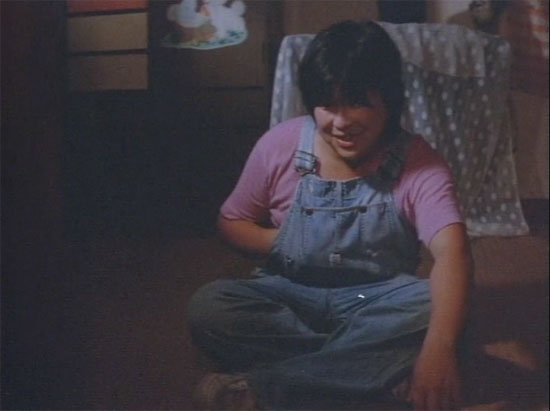
The chubby serial rapist
My expectations for Serial Rapist was that I was going to be watching some sort of embodiment of evil. That was not the case. Serial Rapist is something worse than evil. Serial Rapist is cold and empty with a cold and empty antagonist (if you can call him that – the film doesn’t exactly adhere to narrative conventions) to match. The serial rapist of the film is more like an emotionally stunted child rather than a crafty, cackling villain. His costume is one example of this, but there’s also his tantrum-like behaviour and (weirdly innocent) lack of sympathy. In one scene, he watches a woman painting a depressing factory skyline. She tells him it is “beautiful” to which he reacts violently, screaming like a child and destroying her work. In another chillingly childish moment, he sits cross-legged, listening to the radio reporting on his acts. He looks to the policewoman he has chained up next to him and smiles sheepishly. He is a character full of frustration and fury. He appears to be in a constant state of apprehension – bordering on a breakdown – as the sounds and sights of city life dominate his existence.
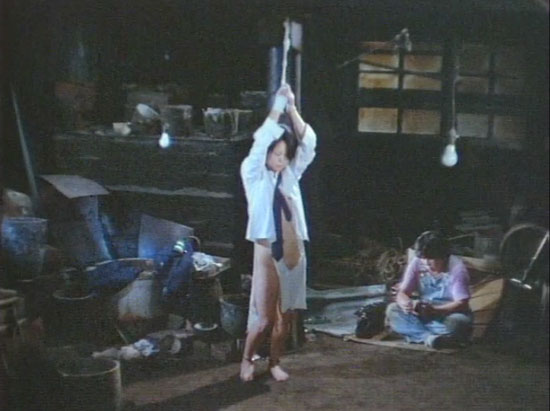
The policewoman - one of the rapist's victims
I also imagined that Serial Rapist would be excessive in its violence. Surprisingly, it is incredibly withheld. There are many scenes of rape and murder, but they are kept short. Whether it be a budgetary issue or a creative choice, the acts of violence are never shown in graphic detail – effectively leaving it to the audience’s imagination. The brutality of the serial rapist’s acts – rather than what we see – adds to the film’s impact. Three scenes in particular left me feeling bruised. Early on, the serial rapist attacks a couple in a car. He shoots the man and rapes the woman, while, shown in a soul-penetrating close-up, the dead man’s unseeing eyes stare blankly at the act. Another shocking moment involves a home invasion. After creepily interrupting a couple’s lovemaking, the rapist ties the lovers together and rapes the woman while the man suffocates underneath the weight of both the rapist and his lover. The scene that affected me most aggressively takes place towards the end of the film. A girl is standing by the bay, considering suicide, while the rapist, sitting on his bicycle, watches. The rapist offers to kill her, she refuses. Terrified, she offers him sex, which he accepts. He shoots her after raping her. She cries for help, telling him that killing herself was only a “fantasy”. We are then subjected to her slow death from the bullet wound.

A truly unsettling moment
Wakamatsu’s restraint in presenting these scenes is partly responsible for the film’s gritty impact. But it’s the cinematography and music that truly shape the bleak misanthropy of Serial Rapist. The depressing surroundings are inescapable. Wakamatsu films the dreary setting with washed out colours and allows the factories, weed-ridden ground, towering electrical poles and apartments to dominate the frame – the frustration and claustrophobia of the lead character becomes contagious. Hand-in-hand with the visual aesthetics, the stripped back musical score from Kaoru Abe completes the tone. The score is minimal with its broken twangs and thumps, but occasionally a wailing saxophone will fill the speakers communicating the film’s utter nihilism perfectly. The film’s sound design is also a revelation. Most scenes are interrupted with searing sounds of the city. When the rape scenes occur, sounds of trains, boats and airplanes drown out the screams of the victims, adding to the suffocating city setting. The result of this stifling atmosphere can be seen not only in our lead rapist, but in his victims. One drunken soon-to-be-victim laughingly says: “how about killing ourselves? We won’t lose anything by doing it.”
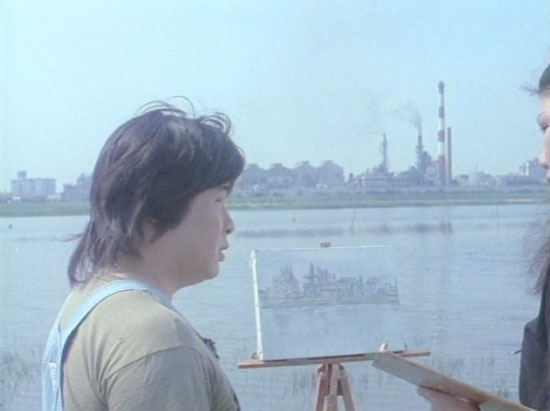
A dull and depressing backdrop
Whether you believe Serial Rapist to be worthless nihilism or something more, it’s hard to deny its power. I can’t argue that it’s not exploitative, but Wakamatsu clearly knows what he’s doing behind the camera. Serial Rapist is obviously a film made with skill and thought, despite having practically no plot. Serial Rapist won’t impress those seeking a quick gory fix, but it will leave attentive viewers with a bad taste that will take some time to wash clear. Serial Rapist is a damning vision of the human race and city life; a vision that Wakamatsu has successfully translated to celluloid. Now I’m going to go cry in the shower for a while.

Serial Rapist takes an interesting turn in its final act





1 comment
An interview with Jasper Sharp | MONDO EXPLOITO says:
Oct 2, 2012
[…] Serial Rapist (1978) There’s one of his you mention in the book – I don’t think that you were a fan of it – one of his films from the 70s called, at least on the version I watched, Serial Rapist… […]